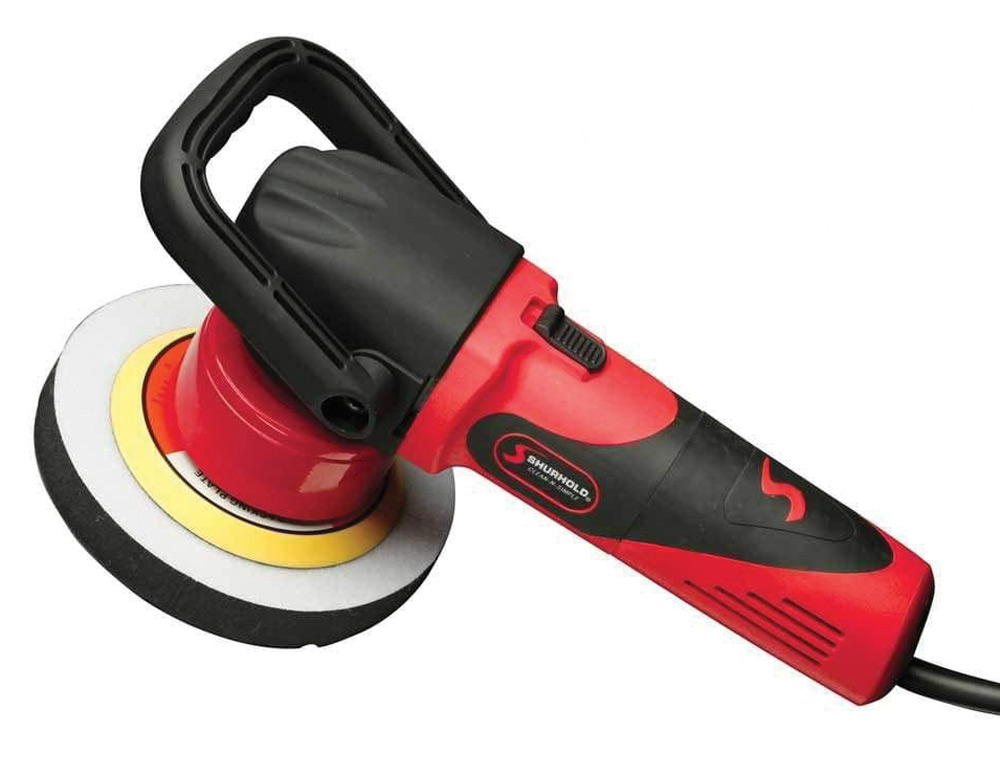Boat detailing
Start the season right by getting your hull sparkling clean
Spring cleaning is a ritual, but when it comes to boats it’s often a necessity. Before you launch for the season is often the only and best opportunity to get a boat sparkling clean. But that kind of clean goes beyond the basics, and taking a few notes from the car detailing world can step up the shine on any hull.
The first step in any detailing project is a thorough washing and, believe it or not, that actually starts with a rinse. Dirt you can rinse away is dirt you don’t have to wash off later. Dirt is also abrasive so even the act of washing it off can mildly scratch the surface. A pressure washer works well, but be sure to use the lowest pressure setting and a garden hose with a good nozzle will also suffice. Thoroughly rinse the boat top to bottom, trying to get off as much dirt as possible.
After a rinse comes a wash. There is no rocket science here, but in general, wash from the top down, and work in sections so soap doesn’t dry on the hull.
Although it can be tempting to use dish washing liquid or another household cleaner, you’re better off using a soap specifically made for cleaning a boat. Other cleaners can be surprisingly harsh and bad for the environment, but boat-specific soaps have a neutral pH so wax is not stripped off. I like Meguiar’s Boat Gel Wash, but some paint manufacturers make cleansers specifically designed to work in conjunction with their products. Awlwash, for instance, is formulated for boats coated with Awlgrip products.
I like to wash with a microfiber wash pad, a fluffy microfiber fabric sewn around a foam pad. The fabric and foam pad holds lots of sudsy water and the microfiber picks up and holds dirt really well. Be sure to rinse the pad often to get all the dirt off before you move to the next section of boat.
Give the whole boat a thorough rinse after you are done washing.
Once the boat is clean inspect the hull for any remaining staining. It is common to find a little rust staining below hardware or yellow or brown waterline stains, particularly on light-colored hulls. A boat-specific cleaner with oxalic acid is the way to deal with these. I use Star Brite’s Ultimate Fiberglass Stain Remover, a spray-on product that is easy to use. I just spray a little on the stain and let it sit for 5 to 10 minutes before scrubbing off with a damp towel. The stains will fade while it sits and anything remaining will wipe away. Rinse thoroughly with fresh water after you have removed all the stains.
You can let the boat air dry, but you’ll end up with water spots that you’ll have to remove later. An absorbent microfiber drying towel is perfect for this job. My favorite drying towel is The Rag Company’s Dry Me A River, a fluffy, incredibly absorbent towel with a waffle weave that comes in 59-by-26-inch size to make quick work of drying.
I have become a towel snob after years of using old household towels. Microfiber is amazing stuff and there is a big difference between quality and cheap towels. I started with a big bundle of microfiber from a big-box store and was not impressed with the tiny, rough towels that turned out to be not at all absorbent. I learned that these are bargain basement towels and that there were much nicer ones out there. Good quality towels are a pleasure to use, they are easier to clean with, dry better, and make it easier to get shinier surfaces.
Microfiber towels are made of polyester and polyamide, polyester provides the structure of the towel and polyamide gives it absorbency and fluffiness. Cheap towels are typically 90% polyester and 10% polyamide, sometimes up to 80% / 20%. Better towels are 70% polyester and 30% polyamide and feature much denser weaves. There is a night and day difference in good towels.
If you’re going to invest in good towels to dry your boat, you might as well take care of them. Make sure to wash microfiber towels separate from other towels, as cotton towel lint will clog the microfiber. Use warm or cold water and gentle detergent. Don’t use fabric softener or dryer sheets, these products will greatly reduce the towel’s absorbency. And finally, dry them at low heat to avoid melting the fibers.
Once the surface is clean I like to use a good cleaner and wax combination like Meguiar’s Flagship Premium Cleaner/Wax. This product will remove normal surface defects like light scratches and oxidation, if you have bigger problems you’ll need to compound and polish but that level of correction is beyond the scope of this story. If you have Awlgrip paint, you’ll need a different product, I would only use Awlgrip AwlCare. AwlCare is nonabrasive to protect the paint, but does a good job removing staining.

There are a few different ways to apply wax, you can do it by hand, with a dual-action polisher, or a rotary polisher. A rotary polisher is the old school method and has pretty much been abandoned even by the old school. Rotaries are great for compounding and polishing out major defects, but are overkill for waxing because they build up a lot of heat, sling wax around and improper technique can cause finish damage. A dual-action polisher is the sweet spot because it spins very slowly and will stop if you push too hard so you can’t cause damage. The extra motion of the orbit provides a little extra scrub. Shurhold makes a nice one and the Porter Cable 7424XP is a classic. Waxing by hand works just fine, but can be a lot of work.
There are not too many options for wax removal, you’ll need to do it by hand. Again a good quality towel will make this job easier and yield a better result. My favorite the Eagle 500 Edgeless from The Rag Company, this is a super soft plush towel with no edge binding at all, it makes quick work of wax removal.
In the last year I discovered P&S Bead Maker, this is a spray-on polymer sealant that is nothing less than amazing. It brings up the shine a lot, is highly hydrophobic so water beads up and runs, and makes the surface incredibly slippery so dirt slides off. It adds a layer of UV protection too, with both UV filters and stabilizers. I like to apply a coat or two to the hull and it works really well on other plastic surfaces on the boat—windows, electronic displays, and alike. You just spray the material on, wipe it and buff with a dry cloth. The finish looks great right away, but gets even shinier in a couple hours as it cures. You’ll find yourself wanting to spray it on everything.
I use Bead Maker as a sealant over wax, but it’s a great drying aid too. To use it as a drying aid, just get the surface fairly dry and spray on Bead Maker, wipe on and buff with a dry cloth. As a drying aid, you’ll combat water spots and leave a slick shiny surface that will look great until the next wash.
These tips should help you make quick work of your spring detailing, and keep your boat looking great all season with minimum effort.
Here’s a list of products that can help make your hull sparkle and shine before launch:
Meguiar’s Gel Wash and Flagship Premium Cleaner/Wax, www.meguiars.com/marine/products;
The Rag Company, Dry Me a River and Eagle 500 Edgeless towels, www.theragcompany.com;
P&S Bead Maker, https://psdetailproducts.com;
Awlgrip AwlCare and AwlWash, www.awlgrip.com/products/maintenance/awlcare.aspx;
Star Brite Ultimate Fiberglass Stain Remover, www.starbrite.com;
ShurHold Dual Action Polisher, https://shurhold.com;
Porter Cable 7424XP Polisher, ww.portercable.com

Comments